An Intro to Google Posts for B2B Marketers [Update: PDF Guide Now Available]
Google has announced that it has released Google Posts to all businesses with listings in Google My Business.
Appearing alongside business listings in search results, use cases for Google Posts include promoting specials, events, content, and products, as well as encouraging newsletter signups.
For B2B companies, Google Posts offers a new way to claim additional search real estate, and a new marketing channel that doesn’t require advertising for visibility.
Update: When you’re ready to get started with Google Posts, scroll to the bottom of this post and download our new guide, Get Started with Google Posts: A How-To Guide for B2B Marketers.
What Are Google Posts?
Google Posts are short pieces of content that are published through Google My Business (GMB). They can include a title, image, up to 1500 characters of content (although Google “prefers” 150-300), event details, and a CTA button.
Google Posts are not related to Google Plus. Google Posts are managed through GMB, and represent a brand or business. Google Plus is a public-facing social media network.
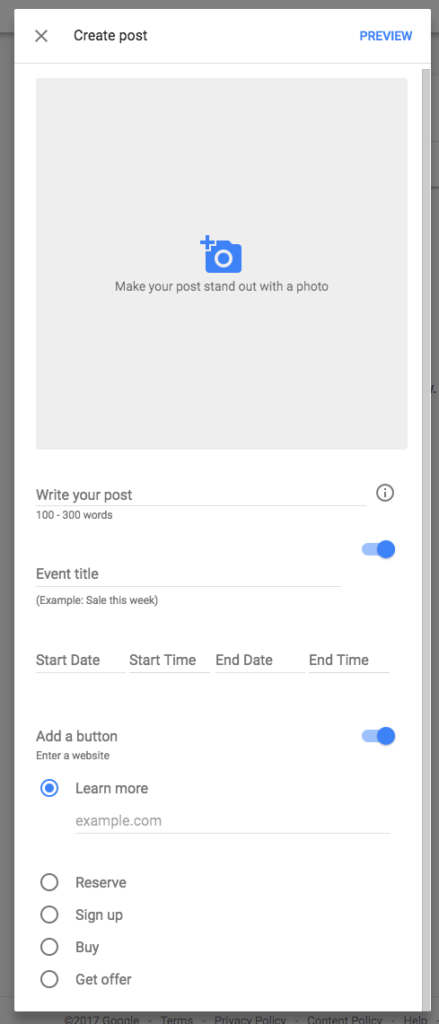
Posts were originally launched in January of 2016. At that time, the feature was only available to political candidates. Since its launch, availability has expanded incrementally, becoming available to a small number of local businesses, movies, museums, sports teams, and musicians before last month’s wide launch.
Google Posts appear in a variety of search result locations for branded queries.
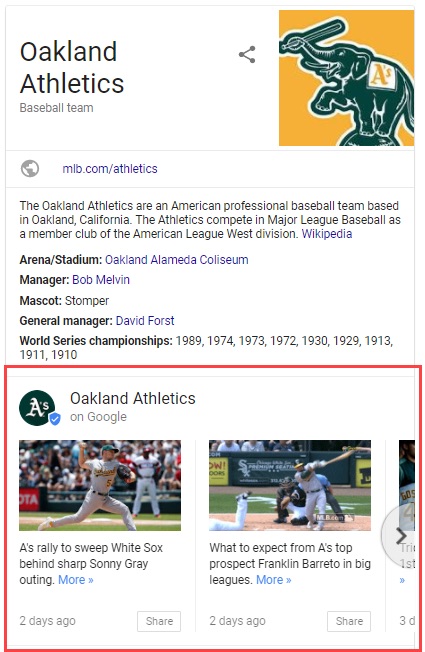
Google Posts appear in the knowledge panel on desktop searches. If multiple posts are available, results display in carousel format.
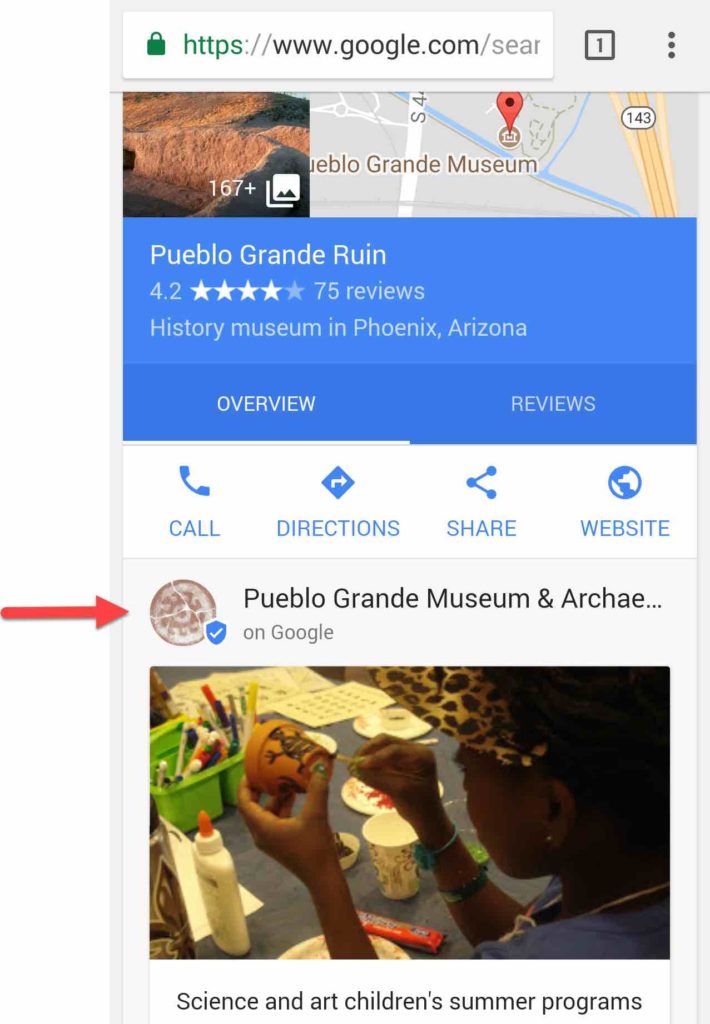
On mobile, Google Posts appear below Maps results for businesses with a Google Maps listing.
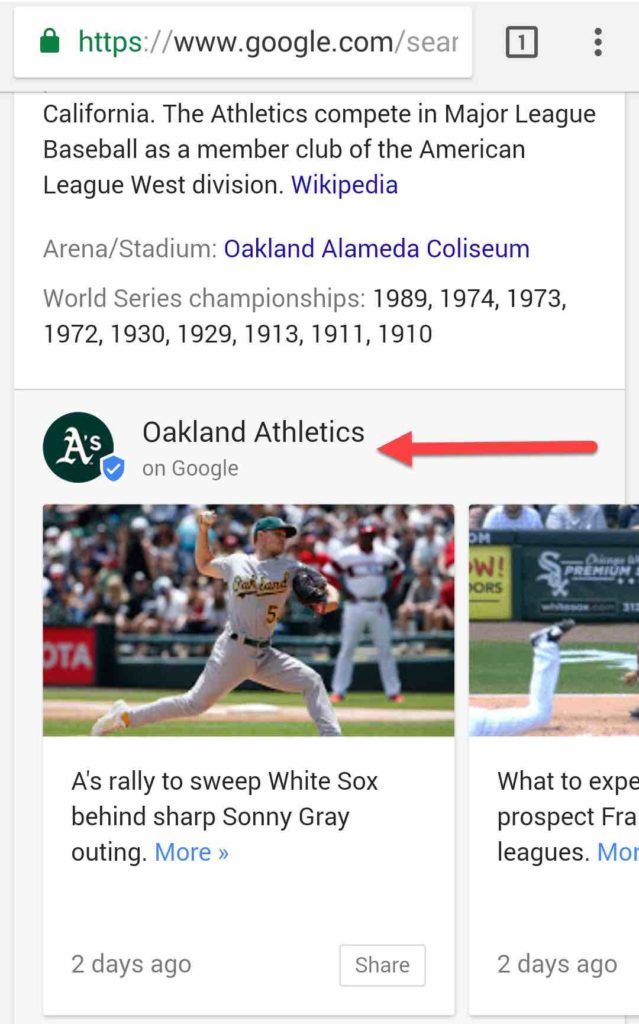
For businesses without a Google Maps listing, Google Posts appear in general search results for branded queries on mobile devices.
Google Posts Use Cases for B2Bs
Much of the buzz has focused on local and/or small businesses, but if history has taught us anything, it’s that there is always an application (or at least a warning) for B2B marketers as well. Confirm that Google Posts is available to your company by logging into your Google My Business account. If it’s available, you’ll see a new “Posts” tab in the navigation.
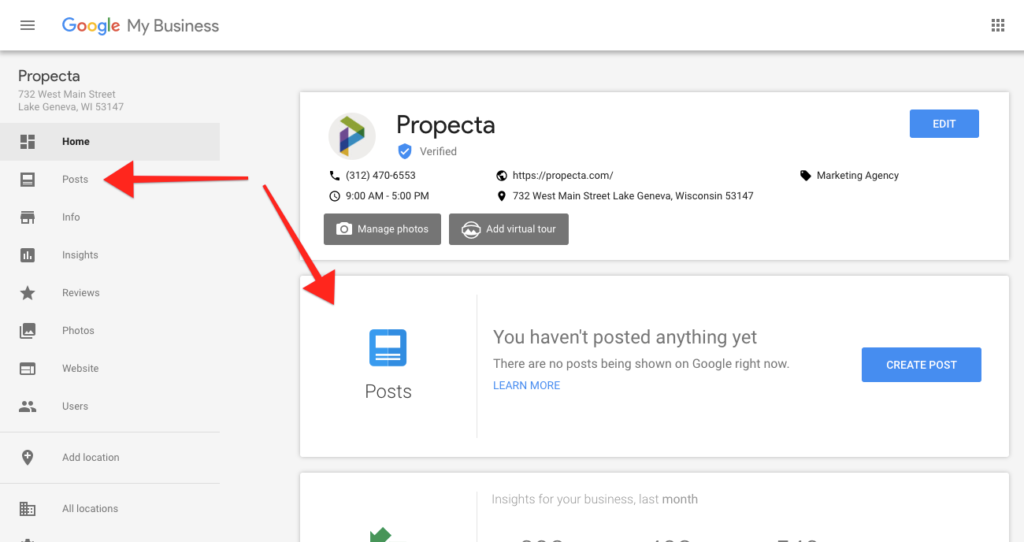
Whether or not the functionality is currently available for your business (and it probably is), it’s a good time to form a strategy for how use can use Google Posts as another marketing channel. Remember, Google Posts display for branded searches, which are usually bottom-of-the-funnel and imply a strong purchase intent. Make sure the content you share is suited for that audience:
- Promote upcoming events. If you have a big industry event planned for later this year, promote it on Google Posts with event dates and times, a brief description, and a CTA pointing to the event details page of your site. You could also promote upcoming webinars.
- Promote sales and specials. If currently discounting event tickets or offering a special rate on a product or service, let people know with a Google Post. It could also be a great place to encourage people to sign up for a free trial.
- Promote your newsletter or important content. If you want to grow email subscribers or promote a high-quality piece of content you’ve published recently, a brief Google Post will allow you to promote within search results without paying for advertising. Google Posts that point to gated content may also help increase leads.
- Share case studies. You probably know this, but buyers like to see case studies – especially toward the end of their journies. Someone searching your brand name is familiar with your company, so show them the kind of results you create to help close the deal.
Since Google Posts are new for most businesses, it will take time to test different types of posts and form validated B2B best practices (which we’re working on — look out for our results in a couple months), but we recommend approaching them similarly to a marketing email:
- Keep the content brief and focused.
- Write a compelling headline.
- Use an original, eye-catching image or graphic.
- Use an upside-down pyramid structure that leads with the most important info first.
Additionally, the two most important posts should be the most recent so that they’ll appear in results without users having to engage with the carousel.
The Future of B2B Search Results
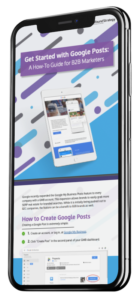 Google Posts offer an opportunity to grab more real estate on the search results page and promote events, specials, case studies, and content without having to invest in advertising. The advantage of Google Posts over similar functionality—Twitter carousels, event schema, and sitelinks—is that Google Posts are larger, simpler to add, and offer more control over the content that appears.
Google Posts offer an opportunity to grab more real estate on the search results page and promote events, specials, case studies, and content without having to invest in advertising. The advantage of Google Posts over similar functionality—Twitter carousels, event schema, and sitelinks—is that Google Posts are larger, simpler to add, and offer more control over the content that appears.
Although most of the focus right now is on small, local businesses, we expect to continue to see Google Posts for larger business. B2B marketers should be aware that Google Posts may soon become one more necessary step to get the most brand exposure out of Google. (We are currently testing the feature on our own brand panel, and with several clients, so we can bring more insights in the fall.)
When you’re ready to get started, use the short form below to download a copy of our exclusive guide Get Started with Google Posts: A How-To Guide for B2B Marketers. It will walk you through the basic steps to help you get started!
What's Next?
Profound Strategy is on a mission to help growth-minded marketers turn SEO back into a source of predictable, reliable, scalable business results.
Start winning in organic search and turn SEO into your most efficient marketing channel. Subscribe to updates and join the 6,000+ marketing executives and founders that are changing the way they do SEO:
And dig deeper with some of our best content, such as The CMO’s Guide to Modern SEO, Technical SEO: A Decision Maker’s Guide, and A Modern Framework for SEO Work that Matters.




